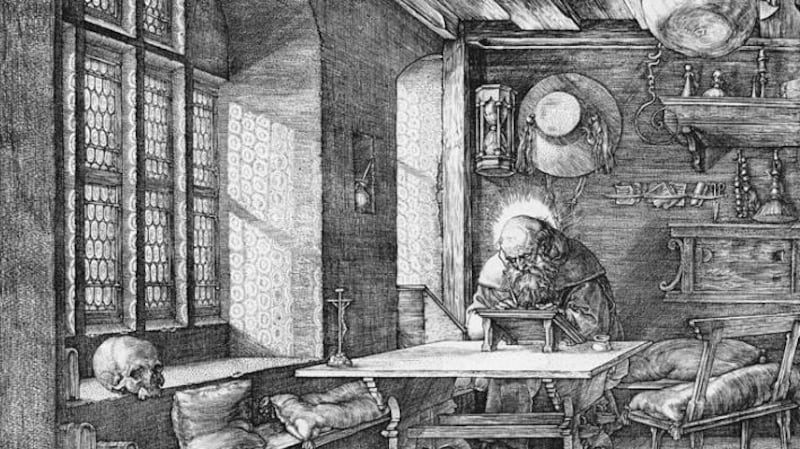Albrecht Dürer was born in Nuremberg in 1471, third of a family of 18 children. Were he still living, he would be celebrating his 549th birthday on Thursday. Dürer’s artistic genius was clear from an early age, as evidenced by a self-portrait he painted when just 13.
In 1494, Dürer visited Italy, where he travelled for a year. A novel connection between art and mathematics was emerging around that time. By using rules of perspective, artists could represent objects in three-dimensional space on a plane canvas with striking realism. He was convinced "the new art must be based upon science; in particular, upon mathematics, as the most exact, logical, and graphically constructive of the sciences".
Innovations in art and mathematics
Dürer was anxious to learn about innovations in art, but also about new developments in mathematics, where Italy was in the vanguard. While there, he made many sketches, visited galleries and churches and met with several artists. Among them was Giovanni Bellini, who had a powerful influence on him. He also became familiar with the work of Leon Battista Alberti on the mathematics of proportions, in particular his treatise Della Pictura.
Upon his return to Germany, Dürer began intensive work in mathematics. He studied Euclid's Elements and also the classical treatise De Achitectura by the Roman architect and engineer Vitruvius. On a second trip to Italy in 1505, Dürer visited Bologna to meet Luca Pacioli, a close associate of Leonardo da Vinci, and became familiar with his mathematical work. Pacioli had a deep appreciation of mathematics in art.
Mathematical writing
Dürer returned to Nuremberg feeling he must delve yet more deeply into the study of mathematics. He began to collect material for a major work on mathematics and its applications to the arts. His mathematical writings included exact and approximate methods of constructing regular polygons, approximate methods of squaring the circle and a method to obtain a good approximation to the trisector of an angle. Platonic solids as well as the semi-regular Archimedean solids are also discussed.

Although his mathematical treatise was completed in 1523, Dürer realised that it was at a level beyond most readers, so he started on a more elementary work, Investigation of the Measurement with Circles and Straight Lines of Plane and Solid Figures, which he published in four books in 1525. This is considered to be the first mathematics book published in German.
Dürer’s final masterpiece, his treatise on proportion, which was in proof stage at the time of his death, was published shortly afterwards. In applying mathematics to art, Dürer developed new and important ideas within mathematics itself. He studied several curves, such as epicycles, spirals and conchoids, although he did not possess the mathematical tools necessary for their analysis.
While engaged in his mathematical studies, Dürer continued to produce art of outstanding quality. His understanding of the principles of perspective is clear from his engraving, Saint Jerome in his Study, made in 1514. In the same year he made Melencolia, one of the most brilliant engravings of all time, and among the most intensively debated works of art. There is much of mathematical interest in this work: a magic square, several mathematical instruments, a sphere and a large polyhedron.
The use of perspective in the hands of Dürer and other Renaissance masters has changed the way that we look at the world.
Peter Lynch is emeritus professor at UCD School of Mathematics & Statistics – he blogs thatsmaths.com










